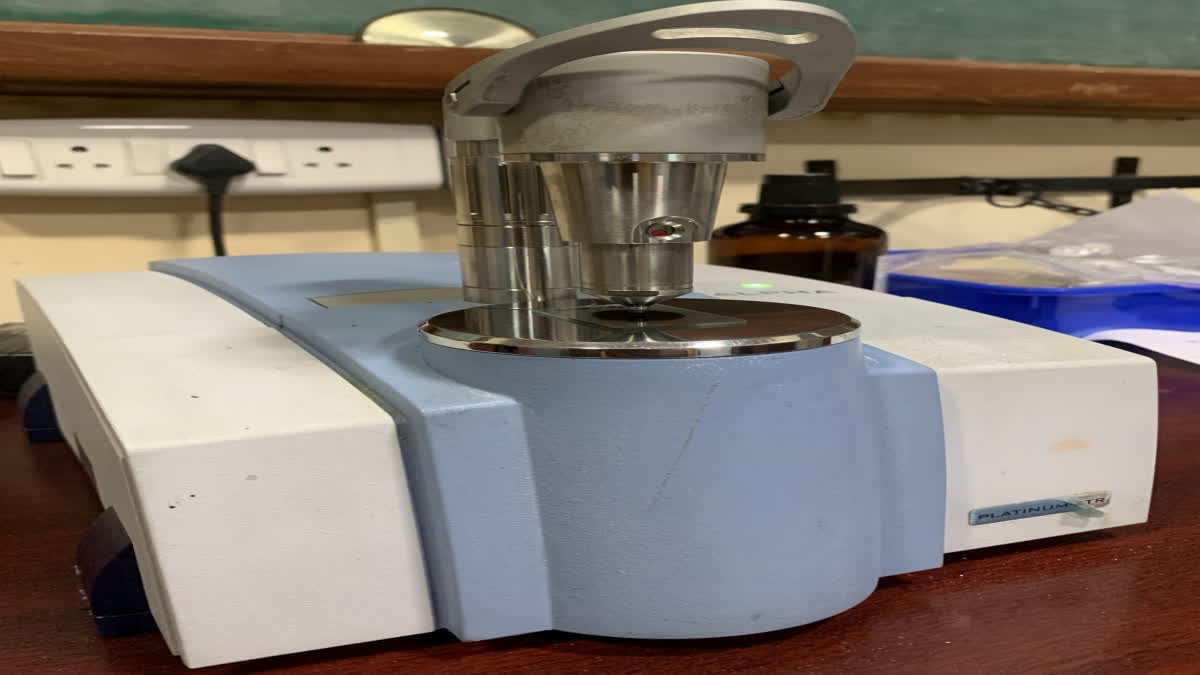Chennai: The Indian Institute of Technology Madras (IIT Madras) researchers are developing a point-of-use, portable tool to detect heavy metals in soil and water. It would enable even untrained users to quickly determine soil and water quality. The research objective is to package the technology into an engineered device, which will be programmed to provide a non-technical read-out value of the soil quality index on a mobile phone-like application. At present, there are no field-usable or point-of-use solutions that a layperson can operate for heavy metal detection in soil.
The Research team recently achieved a breakthrough and has filed a provisional patent (‘Polymeric thin film-based heavy transition metal detector,’ Indian Patent Application No: 202341040751). According to data from the Union Ministry of Jal Shakti, it is estimated that drinking water sources in over 36,000 rural habitations in the country are affected by fluoride, arsenic and heavy metal contamination. The presence of heavy metals also affects soil quality by adding to soil salinity, which would have a significant counterproductive effect on global food security through reduced agricultural yield and adverse effects on human health.
Existing high-end techniques like ‘Inductively Coupled Plasma-Optical Emission Spectroscopy’ (ICP-OES) are not user-friendly to laymen and farmers as they require lengthy procedures, with heavy reliance on sophisticated laboratories. A point-of-use, portable device operable by laypersons has immense benefits, both from social and economic impact perspectives.
The Research Team comprised Dr Sreeram K Kalpathy and Dr Tiju Thomas, Associate Professors, Department of Metallurgical and Materials Engineering, IIT Madras and Vidhya KV, Project Scientist, IIT Madras. They are spearheading the project to fabricate a portable, turnkey device for heavy metal detection.
Highlighting the potential key impact of this technology, Dr Sreeram K Kalpathy, Associate Professor, Department of Metallurgical and Materials Engineering, IIT Madras, said, “The extensive reliance of the Indian population on agriculture necessitates an immediate technological solution such as detecting and measuring heavy metal concentrations. This would give farmers the information they need for deciding, which crops to cultivate and when to make interventions.”
Speaking about the current status of this project and a tentative timeline for field implementation, Dr Sreeram K Kalpathy added, “Current ongoing research is focused on achieving higher resolution detection capabilities for Copper, Lead and Cadmium (in ppm levels), as well as achieving selective detection of specific metals. Testing of real soil/water samples to validate our concept is currently in progress. In this context, with the support of the Rural Technology Action Group at IIT Madras, (RUTAG-IITM) we have also analysed water quality and heavy metal presence in water samples collected from several temple tanks in Rameswaram, Tamil Nadu. We are aiming to have the technology validated and demonstrated in a field environment over the next 3-5 years.”
The permissible limits of heavy metals in soil in India as per the Prevention of Food Adulteration Amendment Act 1999 are (in mg/kg) Cadmium: 3 – 6, Zinc: 300 – 600, Copper: 135 – 270, Lead: 250 – 500, and Nickel: 75 – 150.
Elaborating further, Dr Tiju Thomas, Associate Professor, Department of Metallurgical and Materials Engineering, IIT Madras, said, “Our technology is based on the idea of adsorbing metal ions onto thin polymer films by dipping them in soil wash water (or) the water sample to be analysed. Infrared spectroscopic signals of these films would be compared with a calibrated database to identify and estimate the presence and concentration of heavy metals. At the current stage of development, this method is able to detect the presence of copper in the concentration range of 10 to 1,000 micromolar, zinc in the level of 10 to 5,000 micromolar, and mercury at a few parts per million in water.”
Vidhya KV, Project Scientist, IIT Madras, added, “The scientific novelty of the present invention is that characteristic infrared transmission signals of metal ions adsorbed onto polymer thin films are utilized for detection and quantification. The advantages of the proposed technology over existing ones include minimal sample preparation efforts compared to other techniques such as ICP-OES (Inductively Coupled Plasma – plasma-optical emission Spectroscopy), in which sample acidification, restriction in the use of specific solvents etc. can be limiting factors.”
Along with the proof-of-concept being tested at a laboratory scale, the testing and validation of heavy metal detection is being done by this team of researchers with various soil and water samples collected locally and non-locally.
